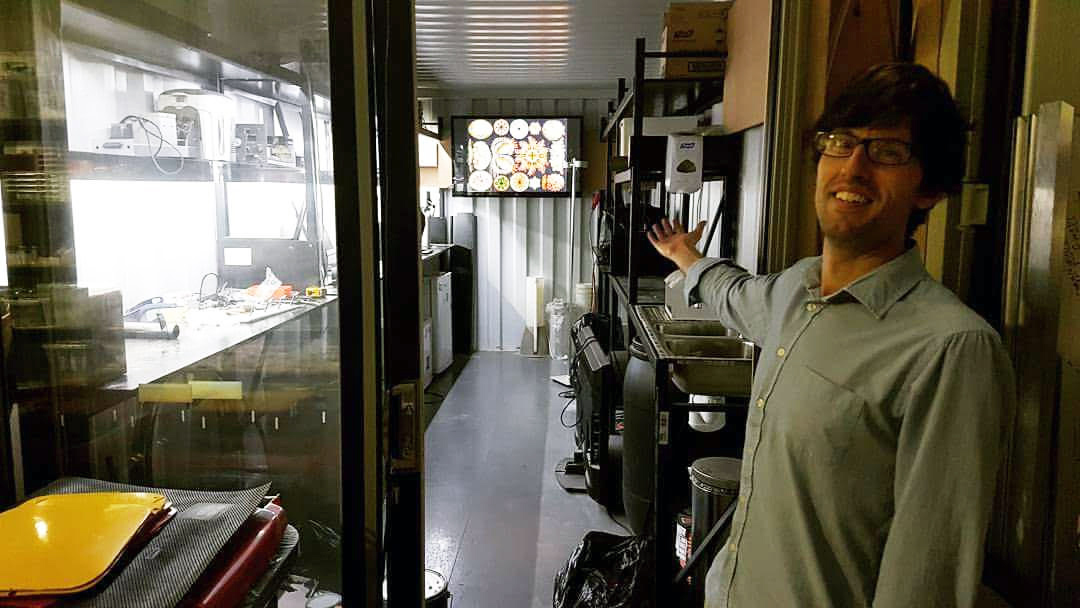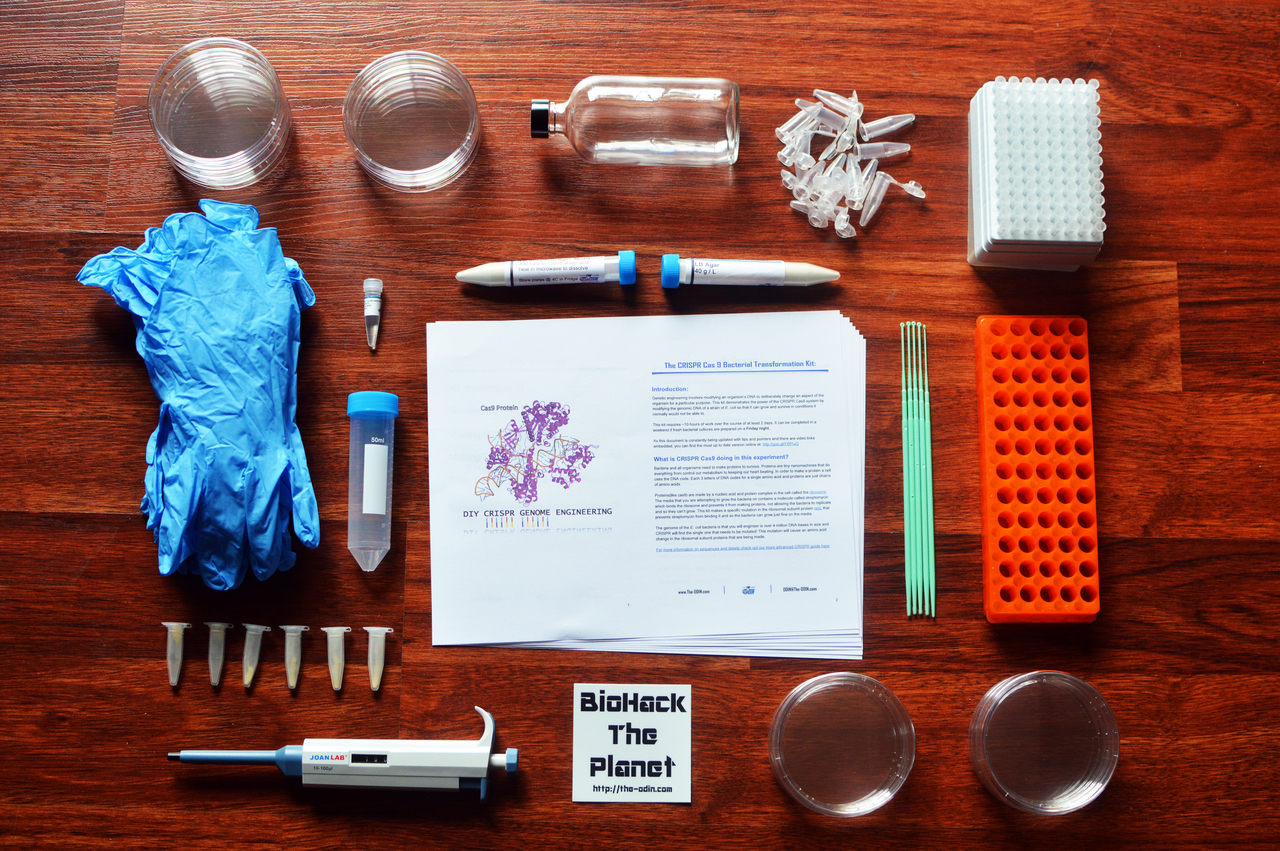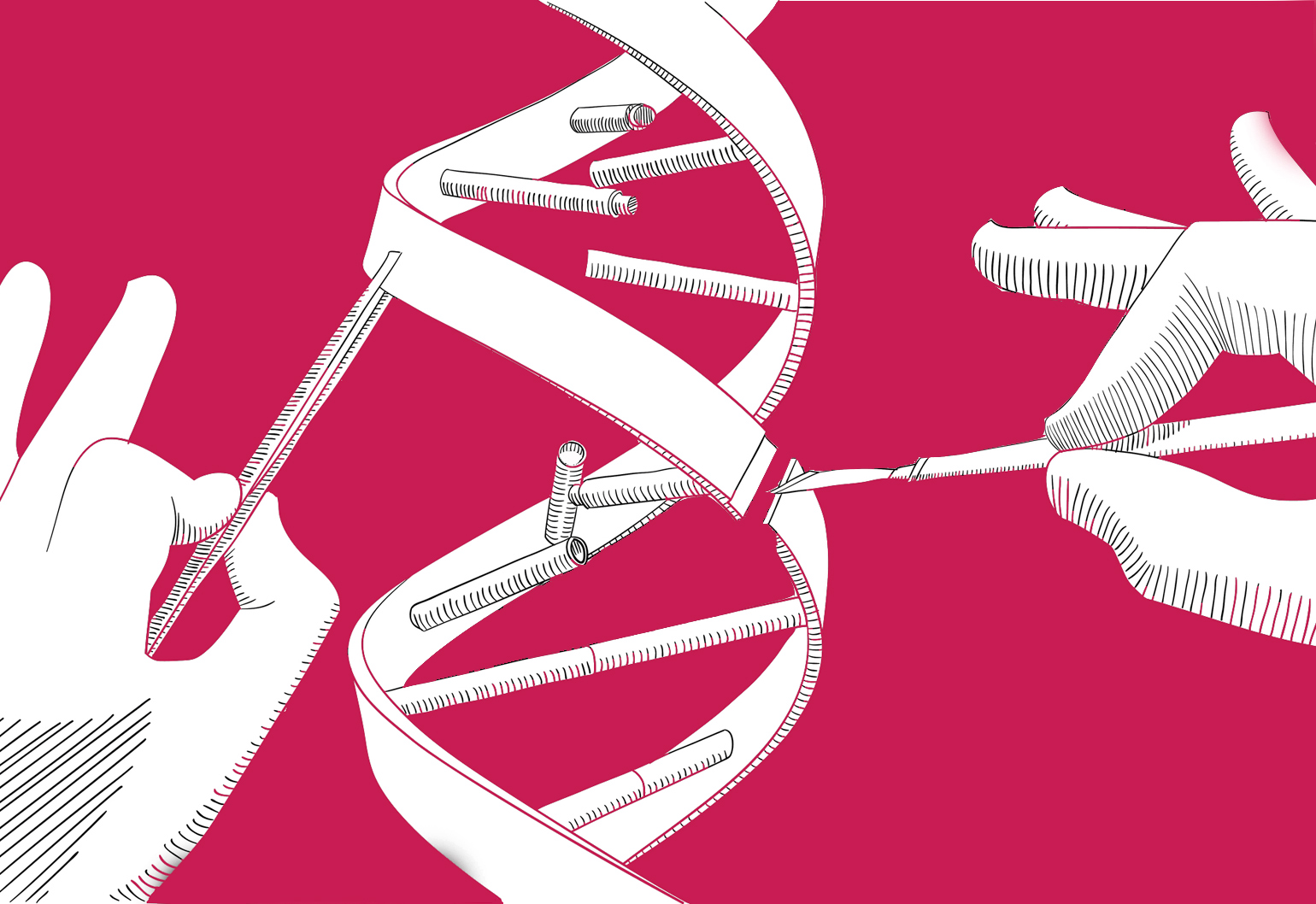The phrase ‘Do It Yourself’ is usually reserved for Pinterest and lifestyle magazines, but biohackers are using the DIY approach to transform the way we think about genetic engineering.
About nine months ago, American biohacking advocate Josiah Zayner became the first person to inject himself with compounds to initiate CRISPR – a gene editing technique that has revolutionised biotechnology due to its high accuracy, speed and low cost.
He attempted to use the technique to delete the gene for myostatin, a protein that inhibits muscle growth. If he were to successfully perform the experiment enough times, he could potentially achieve bigger muscles without having to step inside a gym.
His message: that the process from discovery to application is too slow, while do-it-yourself genetic modification is cheap, easy and accessible now.
“I didn’t view injecting myself with CRISPR as an extreme act when I did it. It was well grounded in science and the safety was well understood,” Zayner told create.
“It might have been a little taboo, but I think in five or 10 years it won’t even be considered weird.”
So what is biohacking?
If Zayner is right and biohacking ourselves will soon be nothing to blink at, it’s worth taking a step back and figuring out what that actually means.
The term ‘biohacking’ has been used to describe three very different practices: nutrigenomics, Grinder biohacking and do-it-yourself biology.
Practitioners of nutrigenomics and Grinder biohacking aim to increase the efficiency and functionality of their bodies, either through improving their diet or modifying their bodies with electronic devices.
However, in this instance ‘biohacking’ refers to a social, DIY movement in biotechnology. Individuals and small organisations are studying biology and genetic engineering using methods previously reserved for universities and traditional research labs.
“To us, biohacking is really returning to the way science used to be practised, but now in a more inclusive manner – not just left to those who are wealthy enough to fund their own home lab,” said Andrew Gray and Jaden Hastings, co-directors of Melbourne’s BioQuisitive biohacker space.
Thanks to the internet, social media, and websites such as eBay and YouTube, biohackers can find everything they need to genetically modify microbes or themselves in their own homes.

Online resources including iGEM’s Registry of Standard Biological Parts, open-access journal PLOS ONE and Zayner’s online store The ODIN, which offers DIY genetic engineering kits for making fluorescent bacteria and yeast, and DNA sequencing services have also been crucial for the growth of biohacking and DIY genetic engineering.
“In the past two years or so, the idea of at-home genetic engineering [has become] more and more mainstream with inexpensive tools available from places like The ODIN,” said Zayner, who also sells DIY CRISPR kits via The ODIN and has even posted a ‘How To’ guide on DIY human genome editing.
What’s driving the movement?
While these approaches sound drastic, Dr Alison McLennan from the University of Canberra suggests the actions of some biohackers are being driven by a lack of research investment.
“Some of these people are doing research themselves because they feel nobody else is going to look into certain diseases or problems, or nobody’s going to look into doing things in a lower-cost way for patients,” said McLennan, whose thesis focused on synthetic biology regulation.
“The system rewards research that is publishable and that someone is willing to invest in – that’s the reality.”
A biohacking project that epitomises these concerns is the Open Insulin project, which is a global movement to make insulin cheaper and more widely accessible by developing the first open-source protocol for insulin production.
In 2015 a small team of biohackers from San Francisco (including Zayner) took to experiment.com to crowdfund the project. Their fundraising goal was $6000, but by the end of 2015 they’d raised $16,656. Today, the project has expanded to include biohackers from Australia, Europe and Africa.
“There’s definitely a view in the DIY community that the more people looking into problems and trying to figure them out, the better that is for everyone in terms of better and faster innovation,” McLennan said.
This is reflected in the ethos of biohacking, which is all about democratising science: making it accessible, cheap, and transparent; encouraging curiosity and creativity; and the open sharing of resources, knowledge and skills.
Supply on demand
Over the past 10 years, biohacking and DIY genetic engineering practices have become more mainstream, with experienced scientists, entrepreneurs and hobbyists opening community labs worldwide so people have safe and innovative spaces to engage with science.
“As with other biohacking spaces across the globe, BioQuisitive was born out of necessity,” explained Hastings, who trained in science at Harvard and Oxford universities and is part of a growing global network of biohackers.
“Because of a dearth of hands-on genetic engineering in our education system, we have become de facto educators on emerging tech in this space simply out of public demand.”
Community spaces aren’t the only places people have looked to for materials and resources.
“The demand that we have for our DIY genetic engineering kits has been growing rapidly over the past year. We have sold tens of thousands to people all over the world,” Zayner said.
“People see the kits as a way to experience technology that they could never before experience, and it’s great.”
Ethics and regulation
While ‘hacking’ typically has negative connotations, biohackers tend to mark themselves by the traditional meaning: they share information and ideas, build and repurpose things, and debug each other’s problems.
Their intentions are often noble in terms of opening up channels for education and more accessible, fast-tracked therapeutics. However, safety is also an important consideration.
“Everyone has a right to be curious and to be scientifically aware and interested. But if it’s possibly putting other people at risk then there would need to be some sort of limitations,” McLennan said.
Since Zayner’s demonstration, other videos have surfaced showing biohackers injecting themselves with untested DIY treatments for herpes and HIV, and attempting to cure lactose intolerance with pills containing a genetically engineered virus.

While it’s not at the stage where people can make significant changes to their own genetic makeup, it does raise some important questions.
For example, do we have the right, as Zayner believes, to edit our own genes? And should we?
How can we really be sure that DIY therapeutics are safe in the long and short term, particularly if they’re only tested on individuals with minimal controls or informed observations? How much regulation should there be over access to and use of materials and how would you go about it?
The advent of global markets have made it very difficult to regulate the activities of biohackers and DIY genetic engineers, as well as their access to research materials.
McLennan said it’s pretty amazing what people can accomplish – especially when they have access to the internet.
“I’ve read about people in the US who managed to get all sorts of cancer cells online and they were able to figure out how to extract their own white blood cells and look at how they interacted with different cancer cells,” McLennan said.
In an effort to prevent some sort of Quarantine scenario, the US government has found a way to interact with its known biohacking community.
“In the US, the FBI engages with the do-it-yourself biologists in a positive way. They have open discussion and dialogue” McLennan said.
In Australia, the Office of the Gene Technology Regulator monitors the use of gene technologies and risks to the health and safety of people and the environment, based on the Gene Technology Act 2000.
“Compared to other countries, genetic engineering in Australia is highly regulated,” said BioQuisitive’s Gray.
“We follow the same procedures as any other laboratory in the country, and must meet AS/NZS standards for both the design and operation of a PC1 [Physical Containment Level 1] space.”
These labs are low risk and are only suitable for work with plants, invertebrates and certain microorganisms.
“Working in a PC1 lab means that there are many things that are off limits, like animal studies or working with primary human tissue samples,” Gray said.
While the ability to genetically modify ourselves is still closer to science fiction than reality, biohackers have immense scope to innovate and explore, limited only by their imagination and regulation.
It’ll be interesting to see what the future looks like with more biohackers in it.



